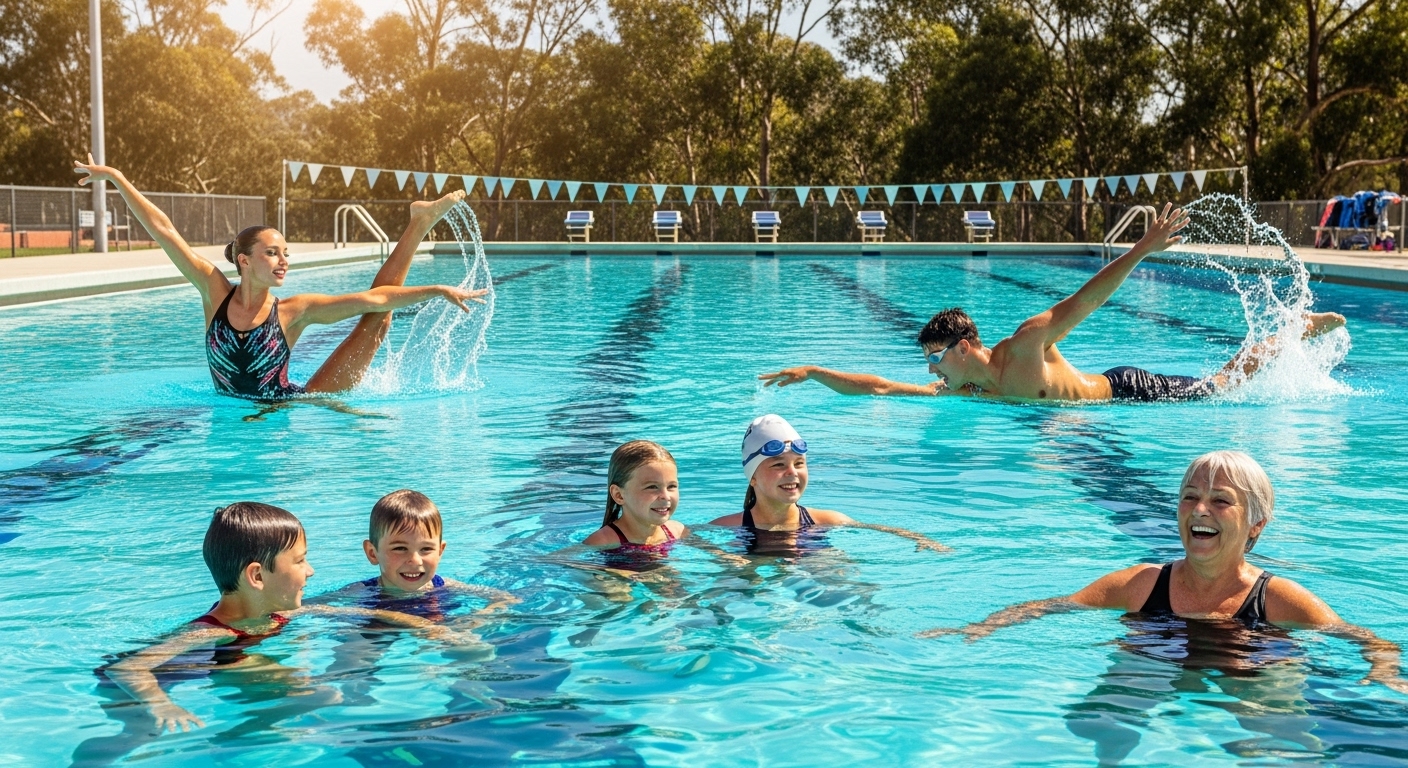Aquatics, a term that encompasses all things related to water sports and activities, has been a vital part of human culture and recreation for centuries. Whether you’re talking about swimming, diving, or synchronized swimming, there’s something about the water that captivates people. It’s more than just a means to cool off on a hot day; it’s a realm of fitness, competition, and pure enjoyment. And, yeah, it’s a bit of an art form too. If you’re into fitness or sports in any capacity, you’ve probably brushed shoulders with aquatics in some form or another.
The Many Faces of Aquatic Sports
So, what are we really talking about when we say “aquatics”? It’s a broad term, for sure. It includes activities like swimming, water polo, diving, and even synchronized swimming. Each has its own set of skills, rules, and body movements. Let’s dive (pun intended) into some of these.
Swimming: The Universal Language
Swimming is probably the first thing that comes to mind. It’s universal. Kids learn it early; adults use it for exercise. Competitive swimming, though, is something else entirely. The nuances of speed, technique, and stamina make it a fascinating sport to watch and participate in. If you’re interested, you can read more about the history and intricacies of swimming on Wikipedia.
Types of Swimming Competitions
Within competitive swimming, there are various styles or strokes, each with its unique form:
- Freestyle: The fastest and most flexible stroke.
- Backstroke: Swimmers lie on their backs and use an alternating arm stroke.
- Breaststroke: Requires a unique frog-like kick and arm pull.
- Butterfly: Known for its challenging technique involving simultaneous arm movement.
Diving: The Art of Falling Gracefully
Diving is both a sport and an art. The sheer elegance and precision required make it a spectacle to behold. Athletes perform acrobatics upon diving into the water, aiming for minimal splash. The sport is inherently risky, but that’s what adds to its allure.
Synchronized Swimming: Grace Meets Athleticism
Don’t dismiss synchronized swimming as mere “dancing in water.” The amount of stamina, flexibility, and precision needed is immense. Teams or individuals perform elaborate routines to music, requiring both artistic flair and athletic prowess.
Benefits of Aquatic Sports
Why engage in aquatic sports? Well, there are plenty of benefits that go beyond just having fun or competing.
Physical Health
The health advantages are well-documented. Immersing yourself in water is low-impact, making these sports excellent for people recovering from injuries. And it’s a full-body workout. Swimming engages multiple muscle groups and boosts cardiovascular health.
Mental Well-being
Ever felt the calming effect of floating in water? Aquatic activities can also enhance your mental well-being. There’s something almost meditative about moving through water, offering stress relief like no other.
Social Connections
Let’s not forget the social aspect. Whether it’s a community swim team or a diving club, aquatic sports offer a venue for fostering relationships. It’s where people from different walks of life meet, share interests, and form bonds.
How to Get Started in Aquatics
If you’re thinking about diving into the world of aquatics, it’s easier than you might think. Most communities have local pools or aquatic centers where you can learn the basics. From there, you can specialize in whatever piques your interest.
Find Your Local Pool
Local pools are often the hub of aquatic activities. They offer swimming lessons, water aerobics, and even diving classes. Many places also offer adaptive programs for individuals with physical limitations.
Join a Club or Team
Clubs provide structured learning and competition opportunities. Whether you’re interested in synchronized swimming or water polo, there’s likely a local group you can join. Not sure where to look? Check out this local guide to finding sports activities.
Equipment and Gear
Starting in aquatics doesn’t require a ton of equipment, but some essentials can make your experience more enjoyable.
Basic Gear
First off, you’ll need a decent swimsuit. Goggles are a must for swimming, especially if you’re planning to swim laps. A swim cap can also be helpful, especially for keeping hair out of your face.
Advanced Gear
If you’re getting more serious, consider investing in fins for swimming, a nose clip for synchronized swimming, or a diving mask if you’re into snorkeling or diving.
| Activity | Essential Gear | Advanced Gear |
|---|---|---|
| Swimming | Swimsuit, Goggles | Fins, Swim Cap |
| Diving | Swimsuit | Diving Mask, Snorkel |
| Synchronized Swimming | Swimsuit, Goggles | Nose Clip |
Breaking Down Barriers
There’s still a bit of stigma about who participates in certain aquatic activities. For example, synchronized swimming often gets pigeonholed as a “women’s sport,” but times are changing. More men are participating, and honestly, it’s about time.
Water polo used to be considered something only for the elite, but community programs are making it accessible to everyone. Breaking down these barriers is crucial for the growth of aquatics as a whole.
Aquatics in Pop Culture
Remember the unforgettable swimming scenes in movies like “Finding Nemo” or the elaborate sequences in the Olympics? Aquatics has also found a place in pop culture. Films often depict these sports as either thrilling or serene, capturing the imagination of audiences worldwide. For a deeper dive into how aquatics are represented in media, check out this informative piece from Britannica.
Whether you’re a water baby or someone who’s just dipping their toes into the pool, the world of aquatics is wide, varied, and welcoming. So, go on, make a splash.
Frequently Asked Questions (FAQs)
- What’s the best age to start swimming lessons? – Honestly, there’s no wrong age. Kids often start young, but adults can learn, too. It’s never too late to dive in!
- Do I need to be a strong swimmer to try water polo? – Not necessarily. It helps, sure, but many local leagues offer beginner programs to get you up to speed.
- Is synchronized swimming only for women? – Nope! Men participate as well, and it’s not uncommon to see mixed-gender teams.
- Do I need special gear for diving? – A basic swimsuit is sufficient for pool diving, but open-water diving will require more gear like a mask and snorkel.
- How do I find a local aquatic club? – Most community centers have information on local clubs. You can also search online or inquire at your local pool.
So, that’s aquatics for you. Whether you’re in it for the competition, the fitness, or just the fun, there’s plenty of room for everyone. Dive in, explore, and enjoy the splash.

